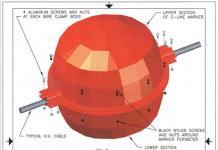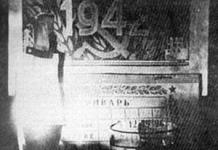Novice electricians often have a question: “Which wire is the neutral wire in the home power supply system?” To answer this question, you should know that the neutral wire is necessary to avoid “phase imbalance”. Experts strive to achieve a uniform load when supplying electricity to consumers. To clearly explain this phenomenon, let’s take as an example an apartment building, where an equal number of apartments are connected to one of three phases. However, uneven consumption in this case still remains. After all, people in each apartment use different electrical appliances at different times of the day and night.
The principle of operation of the neutral wire
Electricity comes to consumers from a voltage transformer, which is capable of converting the voltage of an industrial network into the secondary winding of the transformer is connected in a star circuit, i.e. three wires are connected at one zero point. The second end of the high-voltage wires is connected to terminals called A, B and C.
The ends connected together at the zero point are connected to the ground loop in the substation. There, the high-voltage wire of zero resistance is also divided into:
- (colored yellow-green);
- working zero (colored blue).
The power supply system in new buildings operates according to the scheme described above. It is called the TN-S system. Electricians supply 3 phases, a PE conductor, and a neutral wire to buildings.
Most old apartment buildings do not have a PE conductor. The power supply system consists of 4 wires, it is called TN-C. It is outdated and considered unsafe. In this case, the neutral wire is grounded in the distribution panel of the house.
The phases and zero from the voltage transformer are carried to residential premises by underground or above-ground high-voltage wires, subsequently connecting them to the input panel of the house. This creates a three-phase system with a voltage of 380/220 volts. From the input panel, electricians route wires to entrances and apartments. Electricity is supplied to consumers using wires connected to one of three phases with a network voltage of 220 volts. Also, a PE protective wire (only when using the new TN-S system) and a neutral wire are installed in the living space.
When zero-resistance wires are connected to each electricity consumer, the uneven load on the electrical network practically disappears.
Why is PE protective conductor needed?

A protective conductor or PE is necessary for additional protection of the home. In the event of a short circuit, it diverts current from the location where the wiring is damaged, thereby protecting people from electric shock and property from fire.
In such a network, the load is distributed evenly, since each floor of an apartment building is wired in phases.
The electrical system connected to the living quarters is a “star” that repeats all vector characteristics
Such a system is reliable and optimal, but it also has its drawbacks, since malfunctions periodically occur. Most often, power outages are associated with poor quality wires, as well as poor-quality connections.
Causes of breakage in zero and phases
If there is poor contact between the wires and increased loads on the power supply system, the network breaks.

If any of the three conductors powering the house breaks, consumers connected to it will not receive electricity. At the same time, other consumers who are connected to the remaining two phases receive electricity in full. The current in the neutral wire is summed up from the phases remaining in working condition and will be equal to this value.
All breaks in the network are associated with a power outage to the apartments. Such accidents cannot damage electrical appliances. Dangerous situations that threaten indoor fire and equipment breakdown occur if the connection between the voltage transformer at the substation and the distribution panel is broken. This situation occurs due to many factors, but the most likely cause of power outages is due to an error by the electrician crew.
Causes of short circuit
A short circuit becomes possible when the current does not pass through “zero” to the ground loop A0, B0 and C0. Instead, the currents move along the external circuits AB, BC and CA, which are powered by a voltage of 360 volts. Thus, on one panel of the apartment there may be too little voltage, since the frugal tenant has turned off all electrical appliances, while on the other a voltage is formed that is close to linear - 360 volts. This causes damage to the wires. The devices, in turn, overheat as a result of the supply of off-design currents to them.
To avoid such a situation and protect against a sudden surge in voltage, there are protection devices that are installed inside apartment panels. They are also placed in the housing of expensive electrical appliances to prevent breakdowns, for example, in refrigerators and freezers.
Method for determining zero and phase in a house

To identify a fault in the electrical wiring at home, most often they use a budget screwdriver with a light indicator. Such a device works due to the passage of capacitive current inside its body. The internal part of such a device is equipped with the following components:
- a bare metal tip, which serves to connect it to a phase or neutral conductor;
- a resistor that reduces the amplitude of the current passing through the screwdriver to a safe value;
- which lights up when current flows through the metal part of the device. A burning indicator indicates the presence of current in the phase;
- a platform through which current passes through the human body and reaches ground potential.
Experienced electricians purchase more functional devices for troubleshooting, for example, a multifunctional electronic indicator in the form of a screwdriver, powered by two batteries, thanks to which the device is capable of creating a voltage of 3 volts. In addition to phase detection, such devices perform other tasks.
If the light bulb lights up when the device comes into contact with an electrical contact, then a phase has been detected. When the indicator comes into contact with conductors PE and N, the indicator light should not light up. If this is not the case, then the electrical circuit is faulty.
Causes of damage to the zero in the circuit

Damage to the neutral conductor usually occurs in places where the connection is made poorly. If the resistance at the connection points is high enough, the wires heat up. At elevated temperatures, the junction oxidizes, causing the resistance to increase even more. The wiring is heated to a melting point, causing the problematic connection to be completely destroyed.
How to avoid short circuit?
To ensure a reliable connection of metal wires, it is necessary to increase the contact area. Connections 1 cm long will burn out after a month; if you double the length of the twist, the wiring will last a year, but if you connect the wires by twisting in such a way that the length of contact is 5 cm, then the conductor will work for many years. To make your home even more secure, you need to wrap a bare piece of wire around the joint.
Modern tools for connecting contacts

The twisting method for connecting two conductive parts has long been outdated; electricians now use connection tools (PPE). The body of such a product is made in the form of a cap, which screws the wires onto each other, making the connection very reliable.
Even more convenient to use. Simply insert the ends of the two wires that need to be connected together into special grooves until they click. After this, it is quite difficult to disengage the connection.
And in everyday life we use, as a rule, single-phase. This is achieved by connecting our wiring to one of the three phase wires (Figure 1), and for further consideration of the material, which phase comes into the apartment is completely indifferent to us. Since this example is very schematic, we should briefly consider the physical meaning of such a connection (Figure 2).
Electric current occurs in the presence of a closed electrical circuit, which consists of the winding (Lt) of the substation transformer (1), the connecting line (2), and the electrical wiring of our apartment (3). (Here the designation of phase is L, zero - N).
Another point - in order for current to flow through this circuit, at least one electricity consumer Rн must be turned on in the apartment. Otherwise, there will be no current, but the VOLTAGE on the phase will remain.
One of the ends of the Lt winding at the substation is grounded, that is, it has electrical contact with the ground (Zml). The wire that comes from this point is neutral, the other is phase.
This leads to another obvious practical conclusion: the voltage between “zero” and “ground” will be close to zero (determined by grounding resistance), and “ground” will be “phase”, in our case 220 Volts.
Moreover, if hypothetically ( In practice this cannot be done!) ground the neutral wire in the apartment, disconnecting it from the substation (Fig. 3), the voltage “phase” - “zero” will be the same 220 Volts.
We figured out what phase and zero are. Let's talk about grounding. I think its physical meaning is already clear, so I propose to look at it from a practical point of view.

If, for some reason, electrical contact occurs between the phase and the conductive (metal, for example) body of an electrical device, voltage appears on the latter.
When you touch this body, an electric current may flow through the body. This is due to the presence of electrical contact between the body and the “ground” (Fig. 4). The lower the resistance of this contact (wet or metal floor, direct contact of the building structure with natural grounding conductors (heating radiators, metal water pipes), the greater the danger you face.
The solution to this problem is to ground the housing (Figure 5), in which case the dangerous current will “disappear” through the grounding circuit.
Structurally, the implementation of this method of protection against electric shock for apartments and office premises consists of laying a separate PE grounding conductor (Fig. 6), which is subsequently grounded in one way or another.
How this is done is a topic for a separate discussion; for example, in a private house you can make a grounding loop yourself. There are various options with their own advantages and disadvantages, but for further understanding of this material they are not fundamental, since I propose to consider several purely practical issues.
HOW TO DETERMINE PHASE AND ZERO
Where is the phase, where is the zero - a question that arises when connecting any electrical device.
First let's look at how to find the phase. The easiest way to do this is with an indicator screwdriver (Figure 7).

With the conductive tip of the indicator screwdriver (1) we touch the controlled section of the electrical circuit (during operation, contact of this part of the screwdriver with the body is unacceptable!), with a finger we touch contact pad 3, the glow of indicator 2 indicates the presence of a phase.
In addition to an indicator screwdriver, the phase can be checked with a multimeter (tester), although this is more labor-intensive. To do this, the multimeter should be switched to AC voltage measurement mode with a limit of more than 220 Volts. With one probe of the multimeter (it doesn’t matter which one) we touch the section of the circuit being measured, with the other we touch the natural ground electrode (heating radiators, metal water pipes). When the multimeter readings correspond to the network voltage (about 220 V), there is a phase in the measured section of the circuit (diagram Fig. 8).

I draw your attention to the fact that if the measurements taken show the absence of a phase, it cannot be stated that this is zero. Example in Figure 9.
- Now there is no phase 1 at point.
- When the switch S is closed, it appears.
Therefore, you should check all possible options.
I would like to note that if there is a grounding wire in the electrical wiring, it is impossible to distinguish it from the neutral conductor using electrical measurements within the apartment. As a rule, the wire used for grounding is yellow-green in color, but it is better to verify this visually, for example, remove the socket cover and see which wire is connected to the grounding contacts.
© 2012-2019 All rights reserved.
All materials presented on this site are for informational purposes only and cannot be used as guidelines or regulatory documents.
First of all, you need to understand what it is phase, So what zero, and only after that - how to find them.
On an industrial scale and in everyday life, different currents are produced, these are three-phase alternating and single-phase, respectively. A three-phase network is characterized by the fact that alternating current flows through three wires and returns back through one. But single-phase differs in that our apartment wiring connects to only one of three-phase wires, this process is shown schematically in Figure 1.
To calculate the conductor resistance, you can use the conductor resistance calculator.
It is important to understand that the occurrence of electric current is possible only in the presence of a closed electrical network (Figure 2). Such a network consists of the following elements:
- winding - Lt,
- substation transformer - 1,
- connecting line - 2,
- electrical wiring of the apartment - 3.
In this scheme phase designated as L, zero- N.

In order for current to flow in a closed network, it is important to ensure that at least one energy consumer is connected to it - Rн, otherwise there will be no current, but the voltage in the phase will remain.
The Lt winding has two ends: one of them has contact with the ground, that is, it is grounded (Zml) and goes from this grounding point, it is called zero. The other end is called the phase end.
How to determine phase and zero.

Here we can conclude that the voltage between zero and phase (220 Volts) values will be approximately zero, this fact is determined by the grounding resistance.
For example, for some reason, a contact situation may arise between the phase and the metal body of the electrical appliance, which is conductive, as a result of which tension will appear. To avoid electric shock in such a situation, a residual current device is needed that can provide protection.
If a person touches the tense body of this electrical device, an electric current may occur that will flow through the body, the reason for this is the presence of electronic contact between the body and the “ground” (Figure 4). The degree of danger that a person faces depends on the resistance value of this contact; this can be influenced by the following factors: for example, a wet or metal floor, contact of a building structure with natural grounding conductors (batteries, water pipes) and others. And, accordingly, the lower the contact resistance, the greater the danger.
In such a situation, grounding the chassis will be a solution to the problem (Figure 5).
In practice, this method of protection is implemented as follows: it is necessary to lay a separate grounding conductor PE, which is then grounded in one way or another (Figure 6).

There are various methods of grounding, each has its own advantages and disadvantages, but this is a topic for a separate article; we will not dwell on this now.
Let us now move on to consider several important practical issues.
How to determine phase and zero.
When connecting any electrical appliance, a natural question arises: where phase and where zero?
First, let's try to figure out how to find the phase. The easiest way that currently exists is to use an indicator screwdriver (Figure 7). It consists of the following elements:
- conductive tip - 1,
- indicator - 2,
- contact pad - 3.
The mechanism for using such a screwdriver is quite simple: we touch the controlled section of the electrical circuit with a conductive tip, and touch the contact pad with our finger; if the indicator lights up, this indicates the presence of a phase.
Another way to check the phase is to use a multimeter, or also called a tester. However, this method is more labor-intensive. The multimeter can operate in various modes; in our case, it is necessary to select the AC voltage measurement mode and set the limit to more than 220 Volts. We take one multimeter probe, it doesn’t matter which one, and touch it to the section of the circuit being measured, and with the other probe we touch a natural ground electrode, which can be a heating battery or metal water pipes. An indicator that a given section of the circuit contains phase, there will be multimeter readings corresponding to the network voltage, that is, about 220 V (Figure 8).
If you have taken measurements and they show a lack of phase, state that this is zero it is forbidden. An example can be seen in Figure 9:
- a) At the moment there is no phase at point 1,
- b) When switch S is closed phase appears.
Therefore, it is very important to check all possible options. I would also like to note one point: if in electrical wiring there is a grounding cable, using electrical measurements to distinguish it from neutral conductor impossible. Typically, grounding is performed using a yellow-green wire, but this cannot provide a complete guarantee. Therefore, the easiest way is to look at which wire is connected to the ground contacts under the outlet cover.
Electric current is transmitted through three-phase networks, while most houses have single-phase networks. The splitting of the three-phase circuit is carried out using input distribution devices (IDUs). In simple language, this process can be described as follows. A three-phase circuit is connected to the electrical panel of the house, consisting of three phase, one neutral and one ground wire. Using the ASU, the circuit is split - one neutral and one ground wire are added to each phase wire, resulting in a single-phase network, to which individual consumers are connected.
What are phase and zero
Let's try to figure it out what is zero in electricity and how it differs from phase and ground. Phase conductors are used to supply electricity. In a three-phase network there are three current supply wires and one zero (neutral). The transmitted current is phase shifted by 120 degrees, so one zero is enough in the circuit. The phase conductor has a voltage of 220 V, the phase-phase pair has 380 V. The zero has no voltage.
The generator phases and load phases are connected to each other by linear conductors. The zero points of the generator and the load are connected to each other by a working zero. The current moves through the linear wires from the generator to the load, and through the neutral wires - in the opposite direction. Phase and line voltages are equal regardless of the connection method. The ground (ground wire), like zero, has no voltage. It performs a protective function.
Why is zeroing necessary?
Humanity actively uses electricity, phase and zero- the most important concepts that need to be known and distinguished. As we have already found out, in phase electricity is supplied to the consumer, zero removes the current in the opposite direction. It is necessary to distinguish between neutral working (N) and neutral protective (PE) conductors. The first is necessary to equalize the phase voltage, the second is used for protective grounding.
Depending on the type of power line, an insulated, solidly grounded or effectively grounded zero can be used. Most power lines supplying the residential sector have a solidly grounded neutral. With a symmetrical load on the phase conductors, the working zero has no voltage. If the load is uneven, the unbalance current flows at zero, and the power supply circuit is able to self-regulate its phases.
Electrical networks with an isolated neutral do not have a neutral working conductor. They use a neutral ground wire. In TN electrical systems, the working and protective neutral conductors are combined throughout the entire circuit and are marked PEN. Combining the working and protective zero is possible only up to the switchgear. From it to the end consumer there are already two zeros - PE and N. The combination of neutral conductors is prohibited due to safety precautions, since in the event of a short circuit the phase will close to neutral, and all electrical appliances will be under phase voltage.
How to distinguish phase, zero, ground
The easiest way to determine the purpose of the conductors is by color marking. In accordance with the standards, the phase conductor can have any color, the neutral can be blue, and the ground can be yellow-green. Unfortunately, when installing electrics, color coding is not always observed. We must not forget the likelihood that an unscrupulous or inexperienced electrician can easily confuse phase and zero or connect two phases. For these reasons, it is always better to use more precise methods than color coding.
You can determine the phase and neutral conductors using an indicator screwdriver. When the screwdriver comes into contact with the phase, the indicator will light up, as electric current passes through the conductor. Zero has no voltage, so the indicator cannot light up.
You can distinguish zero from ground using a dial tone. First, the phase is determined and marked, then with a continuity probe you need to touch one of the conductors and the ground terminal in the electrical panel. Zero will not ring. When you touch the ground, a characteristic sound signal will be heard.
It is impossible to define a phase by considering it as a separate element. The physical processes occurring in the network are closely interconnected with other components: phase, zero, ground are impossible without the combination of all elements. Therefore, it is necessary to consider the purpose of all components and the processes occurring in them, understanding what phase and zero, load and grounding are.
Electrical network structure, main elements
It is known from a school physics course that if you rotate a permanent magnet around a winding on a coil in wires, an EMF (electromotive force) arises, which moves charged particles along the wires. This example explains well what phase and zero are in electricity.

Based on this principle, electrical energy generators are created on an industrial scale: it can be a nuclear, hydro, or thermal power plant. Sometimes, to provide temporary power supply in emergencies, diesel, gas or gasoline generators are used at facilities that consume little power. There have been cases in history when nuclear submarines and icebreakers supplied electricity to entire populated areas.

From the generators of power plants, electricity is transmitted through the conductive conductors of cables or power lines (overhead power lines) with a high voltage of 6-10 kV to transformer substations that step down to 04 kV. From the low side of the transformer, energy is supplied to the distribution boards of industrial facilities, residential buildings and apartments in multi-storey buildings. We can say that a phase in electrical engineering is a transport system for transmitting electricity. Along these conductive wires of a cable or power line, charged particles move at the speed of light to the load.
It is in the cable that the conductors are separated as phase, neutral, and ground. Industrial power plants transmit energy to consumers via four- or five-core cables.

Currents are taken from three separate windings of the generator and flow through different wires to the load. In electrical engineering, these conductors are called phases. The fourth core is the neutral wire, which is ultimately connected to the grounding bus in distribution boards, transformer substations and generators. Such circuits are called circuits with a grounded neutral. A phase in electricity is a conductive part along which charged particles move from the generator to the load. To understand what zero is, or why a neutral core is needed, you can compare electric current with the flow of water.
The flowing stream from the top point rotates the wheel with its kinetic energy, doing a certain amount of work, then flows into a river or lake, which is located at a lower level. In the case of electricity, a flow of charged particles with a high potential relative to the ground tends along the phase wire to the load. As an example, you can take an incandescent lamp. Work is done to heat up the lamp coil. After the load passes through the neutral wire, the current goes into the ground; in fact, the neutral wire is needed to drain the current into the ground after it has performed a certain amount of work.
The fifth grounding conductor ensures the safe operation of electrical installations. It, like the zero core, is connected to the grounding buses, which are closed to a common grounding circuit. Each housing of industrial equipment or a household appliance is grounded; when a phase wire is short-circuited to the housing, protection devices are activated and the network is de-energized. Thus, the possibility of electric shock to a person is excluded. The difference between grounding and neutral wire is that the neutral wire is connected to the load contacts, and the grounding wire is connected to the equipment housing.
Phase determination in electrical networks
During installation, maintenance and repair work, problems sometimes arise in how to distinguish the phase from the neutral and ground wires. Appropriate markings are made at different parts of the network.
At power plants, transformer substations and switchgears, the current-carrying busbars to which the cable conductors are connected are marked with color and letter designations:
- Phases are indicated by A - yellow;
- B – green;
- C – red.

With this marking, the phase in electricity is easier to determine; the neutral bus is designated by the letter “N” and painted blue/blue. The grounding bus is marked with a corresponding sign and a yellow-green striped color.

According to the requirements of the PUE (Electrical Installation Rules), cable conductors are also marked by the color of the insulating layer. The blue wire is connected to the neutral bus, the yellow-green wire is connected to the ground loop, red, black, white and other colors can be used as phases. The same markings are used when laying wires with a smaller cross-section in the distribution board for socket and lighting groups.

Unfortunately, these requirements are not always met during installation work, especially in the areas from the switchgear to lighting devices, sockets and individual household appliances.

In conditions of hidden wiring, it is impossible to visually determine the purpose of the conductor at the ends at the cable outlet at the outlet when all or several wires have the same insulation color.
In these cases, indicator and measuring instruments are used, the most popular of which are an indicator screwdriver and a multimeter. To determine the phase wire among the ends coming out of the socket box, it is enough to use an indicator screwdriver. You need to touch the tip of the screwdriver to the bare end, and your thumb to the contact on the top of the screwdriver handle. If there is voltage on the wire, the indicator light in the transparent handle will light up.

This is a classic option when a screwdriver is used to determine the phase of the current in the wire. Manufacturers make many modern designs where it is enough to touch the insulated wire with the tip of a screwdriver on any section, and a light and sound indication will indicate the presence of voltage. But for some reason, consumers prefer classic old models; they are highly reliable and do not require power or battery replacement. Types and designs of indicator screwdrivers is a topic that requires more detailed consideration in a separate article. The potential difference between the neutral and ground wires is zero, there is no voltage, and therefore the indicator does not light. This method is suitable when it is necessary to isolate phases among the wires coming out of a socket box or distribution box, especially when the network is single-phase; for a regular outlet, the potential difference between the phase and ground is 220V.
In distribution boxes at industrial facilities, when equipment with three-phase 380V power is used, there can be many wires for various purposes. Harnesses with wires of various colors are wired to power electric motors, control magnetic starters and other elements of equipment in production. To identify different phases among many wires, an indicator screwdriver is not enough; for this purpose you will need a multimeter. In this case, it is used in the AC voltage measurement mode at a limit of 750V.
In a three-phase network, the voltage between different phases is 380V, between the phases and the neutral or ground wire - 220V. By applying probes to the bare ends, the wires are separated, between which there is 380V, these are separate phases of the network. The third phase is calculated in a similar way: if there is 380V between the already selected ends and the desired wire, then this is it.

For your information. If during the measurement between two wires indicating the presence of a phase, the voltage is 0V, these ends come from the same phase.
As a result of the information presented, we can conclude what a phase is in a single-phase network. This is a section of wire running from the switchboard to the load switch; when the network is working, it is constantly energized relative to the neutral and grounding wires; after the load there is a neutral wire. In a three-phase network, the windings of electric motors, heating elements and other devices are switched on between phases. The wires before the load switch are constantly energized; the neutral wire in the star winding connection circuit is connected at the connection point of the three windings on the generator and after the load. To switch off and on, multi-pole circuit breakers or magnetic starters are used, which break the circuit simultaneously in three phases.
Video




















